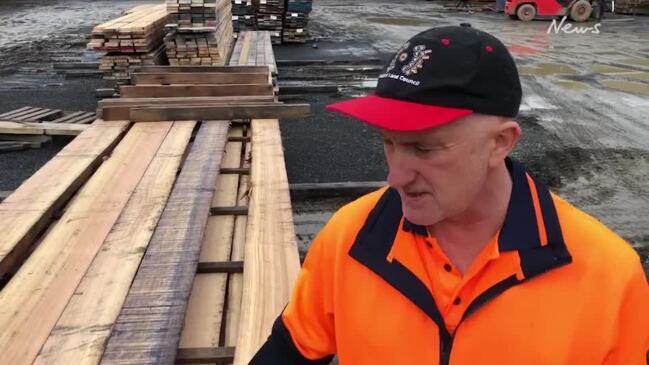Timber locked away: Harvesting becomes unviable in wake of Supreme Court order
Timber harvesting in most of Victoria has been cut back in the wake of today’s final Supreme Court order, ramping up possum protections.

Supreme Court Justice Melinda Richards has issued her final orders in the Environment East Gippsland case against VicForests, which will slash the available area that can be harvested across Victoria’s largest timber production zones.
VicForests is still contemplating the impact of the orders, but Justice Richards’ orders are set to force the state-owned timber native forest manager to resurvey most of its coupes and slash the viability of harvesting others, to protect greater glider possums.
Up until now contractors were able cut down 60 per cent of the trees in a coupe, leaving 40 per cent either standing in the harvest zone or in stream-side buffer and protection areas around trees where gliders had been spotted.
But Justice Richards has ordered VicForests and its contractors can cut only 40 per cent of the timber available in the harvestable area of the coupe, excluding buffer and protection zones.
Timber contractors contacted this evening said the court order would make most coupes unviable.
Orbost contractor Rob Brunt said he was having “a couple of beers with the boys, ’cause we’re all pretty down”.
One VicForests ecologist said both greater and yellow-bellied gliders were so common nearly every coupe would be affected.
“Both (species) are incredibly widespread, with them finding 69,000 of them in the Strathbogies alone,” the ecologist said.
Justice Richards’ order states, “VicForests must not, whether by itself, its servants, agents, contractors or otherwise, conduct timber harvesting operations in any coupe in the East Gippsland FMA in which greater gliders have been detected unless:
(a) it excludes the greater gliders’ located home ranges from timber harvesting operations; and
(b) it excludes from timber harvesting riparian strips at least 100 metres wide located along all waterways in the coupe, with an exclusion area at least 50 metres wide on each side of those waterways; and
(c) it retains at least 60 per cent of the basal area of eucalypts in the harvested area of the coupe.
A similar order has been issued for the Central Highlands.
She also ordered that “VicForests must not, whether by itself, its servants, agents, contractors or otherwise, conduct timber harvesting operations in any coupe in the East Gippsland Forest Management Area unless the coupe has been surveyed using a reasonably practicable survey method that is likely to detect any:
GREATER gliders that may be present in the coupe and, so far as is reasonably practicable, locate their home ranges.
YELLOW-BELLIED gliders that may be present in the coupe and identify their feed trees and hollow-bearing trees in the coupe.
This Order does not apply to a coupe that has been clear-felled since 1939.
The meaning of the last point remains unclear, as vast areas of Victoria were clear-felled after fires in 1939.
VicForests’ initial response was that it seemed unlikely Justice Richards meant to exclude most of East Gippsland and the Central Highlands from more intensive surveying, because nearly all the forests in those areas were regrowth from 1939 clear-felling to salvage timber.
Justice Richards also ordered VicForests to pay Environment East Gippsland’s costs of the proceeding, including any reserved costs, on the standard basis, to be assessed by the Costs Court if not agreed.




